#Fort Point National Historic Site
Photo

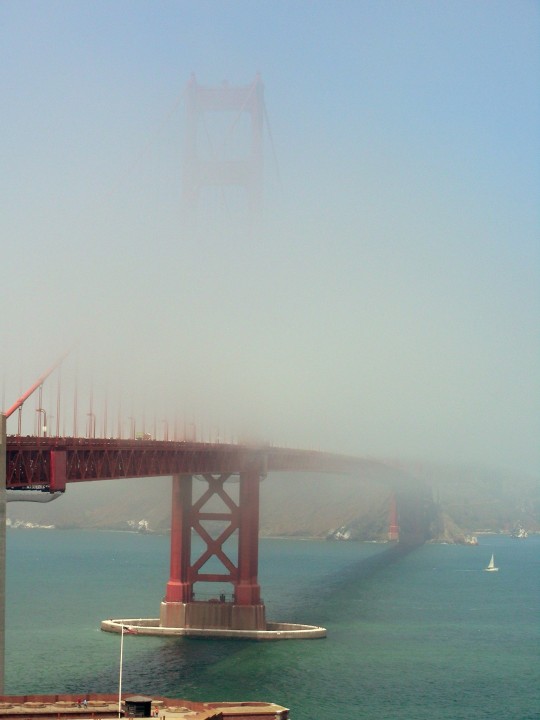


Fort Point National Historic Site was dedicated as a national historic site on April 14, 1971.
#Fort Point National Historic Site#national historic site#14 April 1971#US history#Golden Gate National Recreation Area#Golden Gate Bridge#San Francisco#San Francisco Bay#Pacific Ocean#architecture#cityscape#landmark#USA#West Coast#summer 2016#2008#original photography#summer fog#travel#vacation
12 notes
·
View notes
Photo

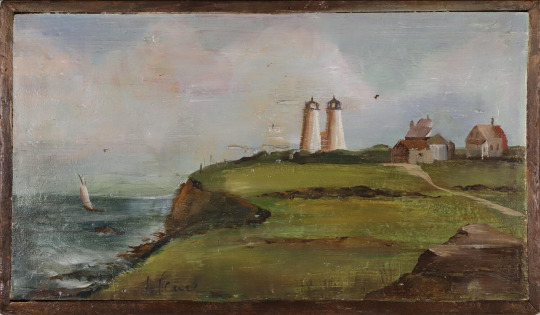
Lighthouse Keeper chest ?, 19th century
Painted with view of Gurnet Twin Lighthouses. Plymouth Light Station, also known as Gurnet Light, was first established on a high bluff at the end of Gurnet Point in 1768. Plymouth served as one of the major ports of colonial America. Increased shipping traffic necessitated a navigational aid to guide mariners in and out of Plymouth Harbor and further promote trade. The original structure resembled a house with a lantern room at each end of the roof. After a fire destroyed the first light station in 1801, a new pair of wooden towers was constructed by 1803.
In 1842 the crumbling towers were replaced with two white octagonal pyramidal towers. The north light was 110 feet above sea level, and the south tower 102 feet. However, the lights were too close together and often were seen as a merged single beam of light. 1871 a fourth-order fresnel lens was installed, greatly increasing the strength of the lights. And in 1914 the Cape Cod Canal opened, giving new importance to the Gurnet as a navigational aid. The Bureau of Lighthouses discontinued one of the twin lights in 1924 as it phased out multiple lights. The remaining light still stands.
On March 8, 1977, the Plymouth Light Station was officially listed on the National Register of Historic Places. In 1998 the Coast Guard moved the lighthouse back from the eroding 45-foot cliff. It was standing only 50 feet from the edge when it was placed on rollers and moved by tracks 140 feet from its previous site. It now sits on the property of Fort Andrew at Gurnet Point. And in 1999 the Coast Guard gave Project Gurnet & Bug Lights, Inc. the first of many 5-year licenses allowing us to restore, preserve, and maintain Gurnet Light.
#naval artifacts#chest#lighthouse keeper chest ?#gurnet twin lighthouses#19th century#lighthouse history
106 notes
·
View notes
Text
https://ictnews.org/news/biden-designates-avi-kwa-ame-a-national-monument
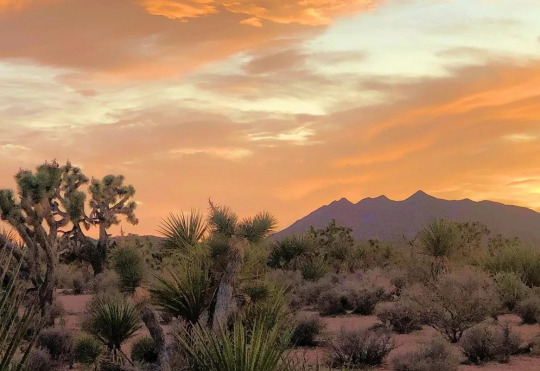
Joe Biden designates Avi Kwa Ame a national monument
President Joe Biden announced on Tuesday Avi Kwa Ame as a national monument in Nevada, following up on a promise he made in late 2022.
Biden also declared a national monument in Texas and the creation of a marine sanctuary in U.S. waters near the Pacific Remote Islands southwest of Hawai'i.
Biden spoke at the White House Conservation in Action Summit at the Interior Department with Fort Mojave Indian Tribal Chairman Timothy Williams commending him during his introduction.
“Under his leadership we have a seat at the table and we are seeing an unprecedented era and opportunity for our tribal communities,” Williams said. “And we are all grateful to the president for taking historic action to combat the climate crisis and conserve and restore our nation’s land and waters.”
Williams was among the proponents to make Avi Kwa Ame, also known as Spirit Mountain, a national monument. It’s considered sacred to the Mojave people and for the nine other Yuman-speaking tribes along the Colorado River, as well as the Hopi and Chemehuevi Paiute tribes, Williams said.
The site in southern Nevada spans more than 500,000 acres near the Arizona and California state lines. It’s home to bighorn sheep, desert tortoises and a large concentration of Joshua trees, some of which are more than 900 years old. It’s also listed on the National Register of Historic Places.
It took more than three months for Biden to make the announcement.
“It’s a place of reverence, it’s a place of spirituality, it’s a place of healing and now it will be recognized for its significance it holds and be preserved forever,” Biden said. “I look forward to visiting it myself.”
He thanked Williams and the legislative leaders who advocated for Avi Kwa Ame including Nevada Rep. Dina Titus, Democrat, who sponsored a bill to protect the rugged region near the Mojave National Preserve from development, including solar farms and a proposed wind farm.
“To the native people who point to Avi Kwa Ame as their spiritual birthplace, and every Nevadan who knows the value of our cherished public lands: Today is for you,″ Titus tweeted.
The Honor Avi Kwa Ame coalition, which includes tribes, local residents, state lawmakers and conservation groups, said its members were "overjoyed" to learn the site will be a new national monument.
"Together, we will honor Avi Kwa Ame today — from its rich Indigenous history, to its vast and diverse plant and wildlife, to the outdoor recreation opportunities created for local cities and towns in southern Nevada by a new gorgeous monument right in their backyard," the group said.
Interior Secretary Deb Haaland released a press release praising the announcement.
“I am grateful to President Biden for taking this important step in recognition of the decades of advocacy from tribes and the scientific community, who are eager to protect the objects within its boundaries,” Haaland stated.“Together with tribal leaders, outdoor enthusiasts, local elected officials, and other stakeholders, we will manage this new monument for the benefit of current and future generations.”
In Texas, Biden plans to create the Castner Range National Monument in El Paso. It’s the ancestral homeland of the Comanche and Apache people, and its cultural ecology is considered sacred to several Indigenous communities.
The designation will protect the cultural, scientific and historic objects found within the monument's boundaries, honor U.S. veterans, service members and tribal nations, and expand access to outdoor recreation on public lands, the White House said.
Located on Fort Bliss, Castner Range served as a training and testing site for the U.S. Army during World War II, the Korean War and the Vietnam War. The Army ceased training at the site and closed Castner Range in 1966.
The Castner Range monument "will preserve fragile lands already surrounded on three sides by development,'' help ensure access to clean water and protect rare and endangered species, said Rep. Veronica Escobar, Democrat-Texas.
“The people of El Paso have fought to protect this for 50 years. Their work has finally paid off,” Biden said.
Biden designated his first national monument, in Colorado, last year. In 2021, he restored the boundaries for Bears Ears National Monument in Utah after they were significantly narrowed by President Donald Trump, a Republican.
In the Pacific, Biden will direct the Commerce Department to consider initiating a new national marine sanctuary designation within 30 days to protect all U.S. waters around the Pacific Remote Islands. If completed, the 777,000 square miles, southwest of Hawaii, will help ensure the U.S. reaches Biden's goal to conserve at least 30 percent of ocean waters under U.S. jurisdiction by 2030, the White House said.
Among Hawaiian state leaders, Biden thanked Native Hawaiian leaders who “worked tirelessly to protect our oceans. I want to thank you. I genuinely mean it, it wouldn't have happened without you.”
Biden also announced a series of steps to conserve, restore and expand access to public lands and waters across the country, the White House said.
The proposals seek to modernize management of America's public lands, harness the power of the ocean to help fight climate change, and better conserve wildlife corridors. Biden also will announce new spending to improve access to outdoor recreation, promote tribal conservation and reduce wildfire risk.
Bidden added he’s committed to working with tribal leaders and legislative leaders on bringing “healthy and abundant” salmon run back to the Colorado River system.
“There’s nothing beyond our capacity if we work together,” Biden said.
66 notes
·
View notes
Text

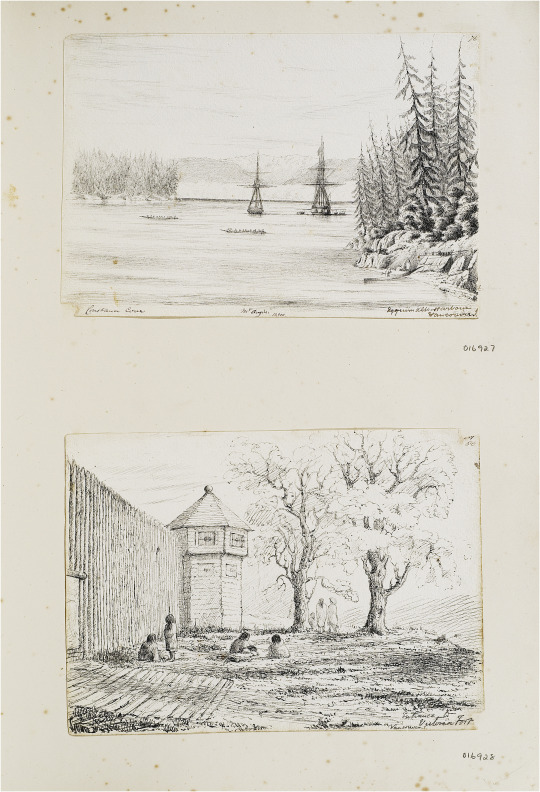


John Linton Palmer, Views near Fort Victoria, June–July 1851, pen and ink, From Chile to the Arctic Album, F030/4 © RGS-IBG.
First plate, top: Esquimalt harbour, with Constance Cove, and Mt Angeles in the distance.
First plate, below: ‘Entrance to Victoria Fort’.
Second plate, above: ‘Fort Victoria, Vancouver I.’.
Second plate, below: ‘From landing place at Victoria Fort’ [original caption].
Third plate: Sketches of people and artefacts, Vancouver Island, June–July 1851.
Fourth plate: Tomb of King Freezy’s brother at the entrance of Victoria Inlet, B. Columbia, 1851′.
"In considering such archival images as traces of encounter, contemporary historians would of course seek to adduce more evidence about the meanings of such events for the participants, in this case both British and Hawaiian, situating these events in their time and place. From this perspective, the rituals of diplomacy, the expectations of the various parties, the knowing and unknowing ways in which these events were described, would all need to be investigated. The same is true of the many other examples of the art of encounter in Linton Palmer’s albums. From an art historical perspective, such imagery would also need to be carefully contextualized with reference to matters of style, genre and perspective. In many cases, as I have argued, the influence of the naval tradition of maritime view-making is clear. However, there is another way of seeing these visual archives, especially when encountered from a heritage perspective, in which the informational content – the documentary detail – may matter even more than the point of view.
In order to substantiate this final point, we should return to Linton Palmer’s Fort Victoria sketches. Fleeting views they may have been, but in their attention to detail – whether the rendering of the hair and adornments of the people he encountered, or the material evidence of Indigenous presence in the landscape – such pencil sketches by naval visitors sometimes record what other contemporary documents do not, and in ways that can be located precisely in space and time. The matt lodges around the Fort, the cedar plank houses across the harbour, a fishing station in the distance: all these features signal an active Indigenous presence at a particular moment preceding a disastrous era in the history of the Indigenous people of what became British Columbia. Since they were first made available to First Nations historians following their exhibition in a 2009 RGS-IBG exhibition (Hidden Histories of Exploration), Linton Palmer’s images have entered the visual archive of Indigenous history and made more widely available in digital form. In particular, they have been incorporated into understandings of local settlement history by Grant Keddie, a curator at the Royal British Columbia Museum in Victoria. As Keddie’s work indicates, there is an ‘archaeological’ way of reading such documents, cross-referencing with other sources of evidence about the precise geography and chronology of landscape change. As is clear from the contemporary significance of the Indigenous sites sketched by Linton Palmer, such work is far from merely of academic interest. In 2001, 150 years after the brief visit of HMS Portland to Fort Victoria, a claim was filed in Canadian courts asserting that the land on which the Parliament of British Columbia was built (near the original Fort) had originally been occupied by or promised to First Nations peoples. After a long and contested legal process, the Ministry of Aboriginal Affairs and Reconciliation eventually reached an out of court settlement with the representatives of the Esquimalt and Songhees nations, which has been valued at $31.5 million dollars. In this context, mapping the precise geography of Indigenous settlement in space and time mattered a great deal: in fact it truly was the multi-million dollar question. And in the process, as researchers and consultants pored over long forgotten maps and drawings not unlike Linton Palmer’s sketches, the visual archive of travel acquired a new value."
- Felix Driver, "Material memories of travel: the albums of a Victorian naval surgeon." Journal of Historical Geography 69 (2020): 53-54
#linton palmer#historical geography#art album#royal navy#vancouver island#victoria#settler colonialism in canada#settler colonialism#indigenous land claims#indigenous history#british empire#canadian history#academic quote#first nations#indigenous people#british columbia history
6 notes
·
View notes
Text

Vice Admiral Sir Tim Laurence: The difference for me, personally, was I was determined to stay in the Navy and I was able to do that. That gave me a career in addition to supporting my wife for many years.
By Robert Hardman | Published 17 August 2019
There has always been an other-worldly quality to Tintagel Castle, the mighty fortress of Arthurian legend which straddles its clifftop ravine on the North Cornish coast.
Last Sunday, the two sides were reunited for the first time in centuries thanks to a new £5million bridge straight out of a fantasy novel.
It was in Tudor times that the narrow strip of land which once connected the mainland part of 'King Arthur's Castle' to its island citadel fell into the sea.
Since then, any visitors have been forced to scale 148 steps cut in to the rock. For the old and infirm, it was out of the question.
Now, though, Tintagel is reunited — much to the relief of the locals. Up to a quarter of a million tourists each year are now expected to use this 21st century drawbridge — as I have just done.
With a gentle bounce underfoot and an alarming gap in the middle, it is an exhilarating experience.
But this crossing also heralds an important new era for many of this country's greatest historic treasures. And supervising it all is the Queen's son-in-law.
Vice Admiral Sir Timothy Laurence, husband of the Princess Royal, is one of the most low-profile members of the Royal Family but, as chairman of English Heritage, he is in charge of some of the most famous structures in the world.
He is the chief custodian of more than 400 hallowed national sites — ranging from Stonehenge and the Battlefield of Hastings to Shropshire's Iron Bridge and Osborne House — not to mention all those blue plaques on the homes of bygone greats.
On his watch, the whole lot has been turned into a new charity. And it has never attempted anything quite like the new bridge to 'King Arthur's Castle'.
So, ahead of the opening, I sat down for a rare and wide-ranging interview with the boss to discuss a range of issues, from government subsidies and HS2 to marrying in to the Royal Family, the prospects of a new Royal Yacht ('not now') and the pain of losing friends on active service.
What is instantly clear is that Sir Tim is much more than a figurehead. 'We're very ambitious.
We want to do things that are a bit spectacular,' he tells me as we study the plans for Tintagel. 'This is a leap. The whole point about it is accessibility.'
He recalls his first visit to Tintagel, negotiating the cliff in deep winter. 'I first went down on a wet January day and I think it's one of the most dangerous things I've ever done climbing down those steps!'
People had been mulling over the idea of a bridge for years, to no avail, until Sir Tim's arrival.
He got in touch with his friends Julia and Hans Rausing, members of the Swedish Tetra Pak clan, though he is modest about his part.
'I know the Rausing family and made an initial contact,' he says. The family trust made a generous grant of £2.5 million, the largest in the organisation's history. What had been a nebulous idea could suddenly take shape.
One might expect to find a risk-averse, steady-as-she-goes approach from a retired admiral in charge of a lot of old buildings (particularly one whose official address is Buckingham Palace).
Sir Tim, however, speaks frankly and clearly feels he is on a mission — against the clock.
He was appointed chairman of English Heritage as it was being cut loose from the state.
Pre-2015, it had been a public sector body with two roles: running historic sites such as Old Sarum and Audley End but also acting as the planning regulator for all listed buildings.
Then the Government split it up. A new state agency, Historic England, took on the regulation while all the historic sites went to a charity under Sir Tim.
It would retain the 'English Heritage' title but was given a grant of £80 million to get started. After that, it would be on its own.
Since most of English Heritage's sites — hill forts, remote ruins and so on — are open and free, it falls to a minority of paying landmarks such as Tintagel to subsidise the rest.
'When we get to the end of our capital grant in 2023, we've got to produce enough running income to cover our running costs plus additional income to invest,' says Sir Tim.
He might talk like the chairman of a FTSE100 company but his position at English Heritage is unpaid.
Yet he clearly loves it and has just been appointed for a second four-year term. And he is not afraid to get political defending his patch.
For example, he is adamant that the Government should slash VAT on conservation work.
'I would love to see VAT reduced on historic buildings. We've been fighting that battle for a long time.
'It would make a huge difference to the historic fabric of this country and it would provide a lot of extra jobs.'
He rattles off tourism statistics — £30 billion gross added value to the economy — and wishes ministers would listen. 'I'm pleading on behalf of the historic environment.
'I don't think the Government is "anti" but I think it could be more "pro". This is not a loss to the Treasury. There are benefits to the Treasury.'
He is also a fan of big, contentious projects such as the proposed road tunnel beneath Stonehenge and HS2.
'I'm supportive of HS2 — so long as we can do it in a way that is sympathetic to the countryside — because I believe very strongly in linking the North and the South of the United Kingdom.'
Having risen to the top of the Royal Navy during his 37-year career, Sir Tim has taken a number of public and private sector roles.
Aged 64, he maintains a schedule on a par with that of his famously busy wife (with 518 public duties in 2018, the Princess Royal still tops the Royal Family's league table of engagements).
Until his term of office finished this summer, Sir Tim was also vice-chairman and de facto head of the Commonwealth War Graves Commission which maintains the memorials and graves of 1.7 million men and women all over the world.
There, too, he ushered in a programme of innovations. The son of a Royal Navy officer who served in World War I, Sir Tim is keen to ensure we never forget those killed in all conflicts.
In 1982, he was serving as navigation officer in the destroyer HMS Sheffield, when he was summoned to Northern Ireland to lead a maritime patrol against IRA gun-runners.
In his absence, Sheffield headed to the South Atlantic without him. On May 4, 1982, she became the first major casualty of the Falklands War when an Argentine Exocet missile killed 20 men and sent the ship to the bottom of the sea. 'I vividly remember watching the news,' he says.
'My first thoughts were of friends. Several officers were killed, all of whom I knew.'
They are always in his mind when he attends the Remembrance Sunday service at the Cenotaph (a monument which, oddly, is maintained by English Heritage rather than the War Graves Commission).
At the age of 28, Lieutenant Laurence received a Mention in Despatches for his work in Northern Ireland and was marked out for higher things.
He was seconded to be Equerry to the Queen in 1986 (meeting his future wife in the process) before returning to sea in command of his own frigate.
In December 1992, he married the Princess Royal in a low-key winter ceremony at Balmoral (a moment of respite at the end of what the Queen had, days earlier, called her 'annus horribilis').
'Everybody who marries a member of the Royal Family has to craft their own way of doing things,' says Sir Tim.
'There's no book of how to behave when you marry the Royal Family.' The experience has left him with a deep admiration for two royal consorts.
'I'm a huge fan of Prince Albert. He designed and built Osborne with William Cubitt. He also designed and built Balmoral Castle.
He had an incredible mind. Bearing in mind how young he was when he died and what he achieved, he was an extraordinary man.'
So is Albert his inspiration? He smiles and points to a more recent role model. 'I think I've gained more from the Duke of Edinburgh obviously because I know him very well.
He is somebody who has supported the Monarch, but also done a huge amount in his own right.
Think of the Duke of Edinburgh's Award Scheme and the number of young people who have been through that.'
The Duke had been one of the Navy's rising stars when the sudden death of George VI put a stop to all that.
Sir Tim has great sympathy for his father-in-law. 'The difference for me, personally, was I was determined to stay in the Navy and I was able to do that.
That gave me a career in addition to supporting my wife for many years. It was suggested that the Duke should leave the Navy when the Queen became Monarch.
'I think, looking back, it might have been possible for him to stay for a bit which might have been good. But anyway, that's what happened.'
Sir Tim's first close encounter with the Royal Family came during a short stint in Britannia as a young 'season' officer.
He joined the Royal Yacht in the Gulf in 1979, with an early setback. 'I came back through the Suez Canal on my back because I'd picked up a stomach bug in Saudi Arabia.' His favourite memories are simply of making an entrance.
'The impact of the Royal Yacht coming in with the Queen on board is unbelievable,' he says.
It is now more than 20 years since Britannia was decommissioned to become a tourist attraction in Leith. Millions of us would dearly love to see a replacement.
Sir Tim thinks it could be a long wait. 'I don't think, at the moment, it could work,' he says. 'I won't say that it won't in the future because the tradition of royal yachts goes back to Charles II.
'The Queen is probably not going to do trips in the way that she has done in Britannia in the past. In a new reign, perhaps the moment may come when they say: 'Well, come on, We're a maritime nation.
'We are good at the sea. We connect with the world through the sea. Perhaps we should have a ship in some form that can represent our nation overseas.'
Britannia, like the monarchy, the English language and so much else — including our great historic sites — are examples of soft power. So do we make the most of them?
'Probably not. I think we could make more of them,' Sir Tim reflects.
'The story that we try to tell through our English Heritage properties is of a nation developing from its roots, developing the rule of law, developing good governance, developing civilised structures.
'I think that is something which most countries overseas appreciate more than many people in Britain actually.'
He points to some conversations he had during this summer's state visit at the Palace.
'I spoke to several people in President Trump's camp who appreciate what Britain has contributed and can contribute.'
Does it bother him when, say, a hectic royal tour with the Princess goes unnoticed back home?
As one who never sought the limelight in the first place, he is relaxed. 'My observation of those trips is that they have an impact overseas, which is very significant and not always appreciated.
'There's a great poem called the Laws Of The Navy, written in about 1900. One of the verses is: 'If you win through an African jungle/ unmentioned at home in the Press/ Trouble not, no man sees the piston/ But it driveth the ship, none the less.' I love that.
Sometimes you have to go overseas and do your bit and just accept that people won't notice it. It's part of life — as frustrating as the fact that it rains on Mondays!'
So what next after spanning the chasm at Tintagel Castle? Sir Tim is keen to see a broader range of names on Britain's blue plaques. As for new sites, he'd like to take on some 'brilliant' old Lancashire cotton mills, despite friendly competition with the National Trust.
And he would dearly love to house the Bayeux Tapestry at a purpose-built site at the Battle of Hastings in Sussex when it makes its long-awaited first visit to Britain in the next few years.
He sees no reason why the capital should hog it. 'It's good for people to get out of London — and Battle is not that far.' He also wants to see English Heritage push its £5-a-month membership scheme — with free entry to all sites — over the one million mark.
Some might lament the fact that great landmarks such as Stonehenge, the Cenotaph or Dover Castle depend on rattling a tin.
Sir Tim sees it as an opportunity: 'It's much clearer, now that we are a charity, for people to know what they are giving money to and how we're using it.'
At Tintagel, the results are plain to see. Sir Tim believes the new bridge would probably never have happened in the days of state control. 'It would have been difficult,' he says. 'We needed the independence of thought.'
Walking across the slate-lined pathway over the dizzying void — in fact it consists of two bridges with a three-inch gap in the middle for thermal expansion — I have no doubt this will be a splendid addition to the Cornish landscape.
Project manager Reuben Briggs points to the steel 'dampers' which will prevent a wobble like that which plagued London's Millennium Bridge and says that the design can withstand a hurricane.
The main problem I foresee will be the queues flocking to pay homage to King Arthur, Sir Lancelot, Sir Galahad and the other knights of the Round Table.
Being gallant chaps, I trust they'll make a space for Sir Tim.
46 notes
·
View notes
Text
Historic Gotham: Part One
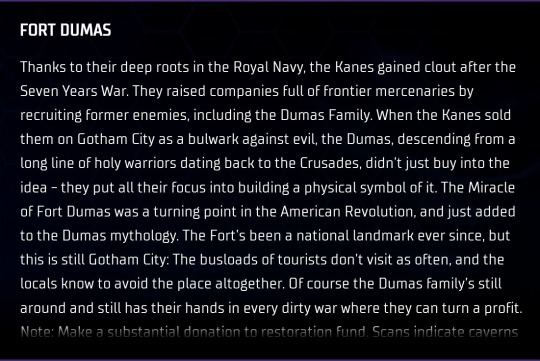
Fort Dumas: Thanks to their deep roots in the Royal Navy, the Kanes gained clout after the Seven Years War. They raised companies full of frontier mercenaries by recruiting former enemies, including the Dumas Family. When the Kanes sold them on Gotham City as a bulwark against evil, the Dumas, descending from a long line of holy warriors dating back to the Crusades, didn't just buy into the idea - they put all their focus into building a physical symbol of it. The Miracle of Fort Dumas was a turning point in the American Revolution, and just added to the Dumas mythology. The Fort's been a national landmark ever since, but this is still Gotham City: The busloads of tourists don't visit as often, and the locals know to avoid the place altogether. Of course the Dumas family's still around and still has their hands in every dirty war where they can turn a profit.
Note: Make a substantial donation to restoration fund. Scans indicate caverns under cliff; could reinforce for water-borne operations?
I remember when Bruce was investigating the possibility of having multiple Batcaves around the city. Shame he never went through with it. - J. T.

Gotham City Cathedral: The Gotham Cathedral is the largest church in Gotham City and was the city's first supermassive structure. It was designed by Cyrus Pinkney in the 1840s and took almost thirty years to finish. It was officially completed in 1877. Pinkney was a very religious man and imbued the cathedral with designs that would "cast away evil spirits", like the gargoyles located around the church. He's also responsible for the design and construction of the mansion that later became Arkham Asylum. The Gotham Cathedral became such a renowned landmark that its style - dubbed the "New Gotham Style" - was recreated by various architects for other buildings across the city. This is also where my parents' funeral took place before they were brought to the Wayne family crypt at the Gotham City cemetery. I haven't gone inside since.

Gotham City Fire Department: The Gotham City Fire Department was established in the 1800s and was then known as the Gotham Town Fire Brigade. It was privately run and was composed of a small group of volunteers who patrolled the streets for signs of fires. At the onset of the Industrial Revolution, many factories opened their doors in Gotham, but due to a lack of volunteers and resources to protect the new warehouses, the fire brigade was turned into a government-run institution. This allowed the newly formed fire department to widen their efforts to the rest of Gotham. The GCFD puts out thousands of fires every year and are almost always accompanied by GCPD officers when responding to emergencies, as they are ill-equipped to deal with the city's criminal gangs, who are responsible for over 70% of all fires in Gotham.

City Hall: The original City Hall occupied Gotham Town's former Courthouse and was the site of the signing of the city charter in 1836. A statue was built in the adjoining plaza to honor Bartholomew Wycliffe, Gotham City's first mayor. The new building features a modern bas-relief wall design at street level, which portrays key moments from Gotham's foundation. As Batman, I tend to stay far away from City Hall, but as Bruce Wayne I've had to visit many times to acquire permits for various projects. City Hall has been the site of multiple riots through the years, like the one of 1840 that eventually led to the creation of the GCPD. This, in addition to the arrival of meta criminals, has forced the mayor to increase the building's security. It has been equipped with reinforced doors and windows as well as a safe room in the basement, where the mayor can retreat in case of emergency.
3 notes
·
View notes
Text
a personal reflection on decolonization
riel s. | 2022
Tansii kiiya (hello, how are you?) my name is riel starr and I am a Red River Michif artist and academic. my history on his land begins thousands of years ago among the peoples of the great plains, and my written history begins in the late 1600s with my first French ancestors and their unnamed first nations wives. my first First Nations ancestor is an unnamed woman referred to in my grandmother’s family tree as “Cree Woman”. I am Red River Métis on my mother’s side. Our historic Métis family names are Berthelet, Caron, St. Germaine, Dazé, Larivière and Dubois, and we come from the communities of Point à Grouette (now called St. Agathe), St. Norbert, and St. Vital (now modern-day Winnipeg) as well as the historic Batoche, Saskatchewan. My Berthelet ancestors were notable community leaders in Pointe à Grouette and my Caron ancestors including my fifth great uncle jean caron sr. fought in the North West resistance of 1885 at the battle of Duck Lake when he was fifty-two years old. Jean Caron Sr’s house is now a historic site in Batoche. As for myself my mother is a Métis educator and academic and my father is a settler archaeologist-turned-locksmith. I introduce myself in this way, the traditional way of Métis writers to contextualize my family, my knowledge and experiences, as well as my place on this land.
Natually, my native mother and my settler archaeologist father never married and split before I was old enough to form any memories. Museums and history have always been a fascination to me; the Royal Terrell Museum in Drumheller, which I dubbed “the dead dinosaur museum” and the Royal Alberta Museum which I called “the dead mouse museum” after my favourite display. The display was a larger-than-life diorama of a mouse, it’s intestines showing, the organisms that helped decompose the corpse were also displayed, massive daddy long legs, gigantic ants, worms thicker than my arm. The RAM is an interesting place. A few years ago, it was moved into a new building downtown and I could no longer spend hours finding fossils in the limestone exterior of the original museum. The place had changed drastically. As I reminisce on what I loved about the RAM I realize that all the things I disliked were their representations of Indigenous people; the uncanny wax figures with placid skin that did not resemble a single Native person’s skin that I had met. and the artwork they portrayed as artifacts. What makes a beaded bag so different from a Van Dyck if they’re the same age? And honoured the same amount by the people who made them?
Another place of importance growing up was Fort Edmonton Park. Like Heritage Park, Fort Edmonton has costumed interpreters, who teach visitors history as if the interpreters were of that time. In the summer of 2017, my lifelong dream came true, and I became a volunteer costumed interpreter with my mentor Sheldon Stockdale, another Métis person, and we were able to teach our history in the way we felt was right, something deeply important to the Métis people. An experience we had that stands out vividly is working on Fort Edmonton’s 1920 Street, and educating visitors on the history of pemmican, a sort of ancient protein bar made from berries, dried meat, and animal fat. Pemmican was a staple of survival for the Métis, and we were asking visitors to help us in redesigning the packaging for the bar. The historic package had a representation of an Indigenous person on it, a caricature of a race. We asked visitors if turning Indigenous people into mascots should be accepted, and sadly many people didn’t see the problem. Sheldon and I borderline argued with a man who seemed to see no problem in reducing us, the people speaking to him, to caricatures. In a similar vein, someone once gave me Chicago Blackhawk’s stickers when i was six, and not knowing a thing about hockey I asked my mother who the stickers were of. I’m guessing my mother did not want to explain the history of colonization and caricatures of Indigenous people, so she dismissed my question by telling me that the man in the tacky illustration was my ancestor.
Decolonizing art history seems like an impossible task, and perhaps it is. You cannot separate someone like Emily Carr from art history in Canada, however you can change the way you teach her work. Perhaps decolonizing art history means recognizing the ways in which “art history” as a field of study is deeply Euro-centric, and how the way of teaching this history is the same. I took my first semester at AUArts in the fall of 2020 after transferring from MacEwan after completing a two-year diploma at MacEwan University. I had a sculpture class a media arts class an art history class. The more I consider how to decolonize our history the more I understand that it is not the history that can be decolonized, it is the way we are teaching said history. It is the way that so much of our education is taught to us through a colonial lens, rather than a multifaceted history with a multitude of perspectives and peoples contributing until an entire picture is formed.
In the fall of 2020 in my media arts class my professor Kurtis Lesick was discussing an artist, a black artist who had him and others participate in a performance in which in that space the black artist allowed the participants to say the N-word. Rather than describing the piece in the way I just did removing the slur, Kurtis Lesick made the conscious decision to say the N- word twice. A person I had once thought to be an ally of mine, who knew the language of decolonization. Earlier this year a classmate in this class who was also in my sculpture class in the winter of 2022 told me that ‘knowing me has made her a better person’, this woman does not know me, and I do not know her, but I knew her in that moment. I knew that she wanted me to absolve her of her settler guilt. White settlers love referencing Tuck and Yang’s Decolonization Is Not a Metaphor but sometimes I wonder if they truly understand that it is simply not enough to know the language of decolonization, that you must be actively anti-colonial in a field that is built on colonization.
I spent a lot of time at Fort Calgary this semester for my FINA class, critiquing their exhibitions wondering how they can be improved if they can be improved, and I learned that given their budget that it is not possible. Fort Calgary, like other institutions cannot afford to replace their current exhibits and entirely redesign the way they teach history. What they can do is acknowledge the missing pieces, they can acknowledge the gaps they can acknowledge the fact that there’s more than one canon of history. Sometimes I wonder if the mosaic of history is too complex to decolonize; knowing that we will never return to a world like the one that existed pre-colonization. I think about my one classmate who tokenizes me, who knows how to use decolonial language to appear one way, but who never puts those concepts into practice. I think about the settlers who think that decolonization is re-colonizing the Americas but with “the Indians” in charge this time.
I now understand that decolonizing art history cannot happen without first decolonizing institutions. I have learned that we cannot forget that we once taught art history in an i way we cannot forget the way colonization has infiltrated every aspect of the education system down to the teaching styles of each professor. if we forget how colonial art history is in the first place, we will forget why we need to decolonize. Considering the hand that art history is hard in colonization around the world, I consider about the way southeast Asian women’s bodies are talked about in my textbooks versus European odalisque paintings. Brown people’s bodies were inherently sexualized and seen as dirty, while white people’s bodies were adored and deemed Classical.
Maybe colonization is another movement in the worldwide canon of art history. Another period in the bar graph of history- as google images seems to see art history. Perhaps Emily Carr and Paul Gauguin are the faces of this genre. Just as colonization cannot be forgotten among its victims, it cannot be forgotten by its perpetrators, who still believe they are a superior culture and race. Genres of literature such as post-colonial writing from India and Sri Lanka may suggest, there was a period of colonial art and literature, perhaps it is ongoing, possibly dying out, maybe here to stay. There will always be an antithesis, an attempt to view art and art history from a different perspective, and that is how we can decolonize art history.
#i posted this on my artist page but i only use it for professional reasons and i don't wanna share it here unless you're a mutual lolol#riel text#my writing#academia#institutional critique#art writing#decolonization#indigenous#métis#michif#indigenous art#first nations art#FNMI art#art#alberta#calgary#post colonialism#colonialism#canada#land back
7 notes
·
View notes
Photo

The Bastion
Haven't uploaded any drawings in a while, have I? This one's been at the back of my mind for a while, but I only just got around to getting it on the page. I like drawing fantasy maps. The colours are just for labelling purposes, however; the whole castle is really more of a dark grey.
Any resemblance to Edinburgh Castle is... probably not 100% unintentional. The Bastion's quite a bit bigger, though.
And now, further worldbuilding background that wouldn’t fit on the drawing:
As the name ‘Kiraan’ stems from the Old Vallic term ‘Ki-Raan’, meaning something like ‘Raan’s Fort’, the entire empire is in a sense named after the castle. This doesn’t really occur to most people. (If Old Imperial = Latin, Old Vallic = Etruscan, though more in the sense of its historical niche than any actual vocab inspiration.)
The six gates are named after the sacred animals of Raan’s tribe and those of his closest allies. Raan was the chieftain of the Bear Tribe, hence the emblem in the corner; the Fox, Stag, Boar, Eagle and Aurochs Tribes fought alongside him in his campaign to unite the Kargvallen hill peoples into a single nation. Their modern descendants make up the noble houses zeAkiro, zeKandron, zeYunar, zeMora and zeTharion, named after the Five Warlords who led the tribes in Raan’s day.
Points 1 to 3 - The Bastion makes more use of constructs than flesh-and-blood beasts of burden in the modern day and part of the stables is used for storing them, but it does still house a few actual horses. Emperor Zarannon loves horses - his favourite steed is a massive Shire-type beast called Starlight Obsidian II - and wouldn’t hear of getting rid of them outright. He’s made sure all of his kids are proficient riders as well.
Point 4 - The River Tower. This is the lowest point of the Bastion, right down near the water level, and houses the great windlass that raises and lowers the river chain across the Stone. It’s usually left lowered and submerged near the river bed except for maintenance; there’s not much cause to block river traffic by Zar’s reign. The soldiers who operate the windlass are nicknamed the Chain Gang.
Point 5 - The Long Stair. A shortcut up to the Great Keep from the Stag Gate, though it’s very steep and not really wide enough for more than one person, so even most people in good shape prefer to take the long way around if they aren’t in any particular hurry.
Point 6 - Forges. The farrier’s workshop down by the stables takes care of the horseshoes, so these ones are dedicated to the rest of the metalworking the Bastion needs. Weapons maintenance is a big chunk of it, but they take care of other odd jobs as well.
Point 7 - The Lesser Keep. The overall headquarters of the Imperial Legions; as well as various meeting rooms, it houses a military archive and living quarters both for visiting officers - Legion legates are expected to deliver updates to the Emperor in person, though the frequency of these updates can vary widely - and the Bastion’s company of archers.
Point 8 - The river jetty. Supplies brought in by water will generally be landed here. Originally there was no choice other than to carry everything up the steep zigzag path from the water to the top of the crag, but a little funicular was installed during the reign of Zar’s father Kaial.
Point 9 - Baths. The fancier living quarters up in the Great Keep have en-suite bathing facilities, but everyone else in the Bastion has to use these. They’re pretty nice, but not big enough for everyone at once, so there’s a rota.
Point 10 - The Well. Not actually a well, though it is built on the site of an old storage cistern. It’s just the nickname for the pumping and filtration station that provides the Bastion’s water supply, bringing water up from the river below and treating it so it’s safe to drink. They haven’t worked out steam power, however, so the pump is driven by a construct walking on a wheel.
Point 11 - Training yard. Self-explanatory, really; the god-soldiers of the Bastion Guard carry out their practice drills here, as well as self-defence training for the Imperial family and other Bastion denizens.
Point 12 - Temple. Also fairly self-explanatory. The Emperor and his family attend the great temples on the Crag of the Triad across the river to the north during major festivals, but for more everyday rituals they’ll use this little one. It’s basically a household shrine on a larger scale.
Point 13 - Garden. This used to be a kitchen garden, but as the Bastion grew over the centuries it just couldn’t keep up with the bigger population. The kitchen staff do still grow a few fresh herbs and fruits in it, but it’s mostly just a place to relax and enjoy the view. The bulk of the Bastion’s food supply is shipped in from farms outside the city.
Point 14 - The Court of Claws. The Imperial Chronicles suggest that it was Emperor Adimar II who started the tradition of keeping bears in the Bastion, about a thousand years after Raan’s day, and successive Emperors have kept it up. They used to just be in cages, but Zar’s great-grandfather Zarannon III was a bit of an animal-lover and had the Court of Claws turned into something more like a proper zoo habitat. The current inhabitant is a very large and contented male called Misha. Strictly speaking he is a sacred emblem of the Empire, symbolising the strength of Raan’s bloodline and the favour of the war god Voynazh, but Zar thinks of him as more of a pet. Really, he’s too tame and lazy to be a good symbol of a war god.
Point 15 - The Great Keep. The highest, biggest, and most heavily-fortified part of the Bastion. The name is fitting, because the Great Keep is huge, and quite easy to get lost in if you don’t know your way around. The upper levels house the apartments for the Imperial family as well as guest rooms for important visitors; the lower levels, some of which are dug right into the living rock, house assorted stores (and lots of them!), the kitchens, the furnace, servants’ quarters, the god-soldiers’ barracks, and basically everything else you need to keep an enormous castle running smoothly. It also has an extensive library and archive for the Imperial Chronicles. The central courtyard is more for extra light and ventilation than anything else. The entrance hall immediately behind the Bear Gate doubles as the throne room, but it’s rather draughty and uncomfortable, so Zar prefers to rule from his office upstairs unless he really needs to put on the Official Emperor Hat for some state occasion.
There’s a saying that one can see the entirety of the Empire from the towers of the Bastion. This is, of course, a poetic exaggeration, but they do give you a great view over most of the Imperial City.
4 notes
·
View notes
Photo
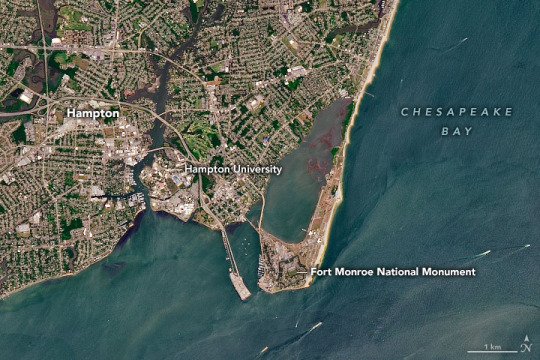
Freedom’s Fortress About 35 million years ago, an asteroid or comet smashed into the continental shelf near what is now the mouth of Chesapeake Bay. Among the areas in the blast zone was Old Point Comfort, the southernmost spit of land on the Virginia Peninsula. That same piece of land was later the site of a historical collision that reverberates to this day. In August 1619, two British-owned privateer ships—the White Lion and the Treasurer—came ashore at Old Point Comfort and delivered 20 to 30 captive Africans in exchange for food. Historians point to that moment as the first instance of slave trading in a British colony in mainland North America. The group of captives, probably from the Kingdom of Ndongo in what is now Angola, were among the hundreds of thousands of Africans who were eventually brought to America and enslaved. The Operational Land Imager (OLI) on Landsat 8 acquired this natural-color image of Old Point Comfort on June 10, 2022. When the first landing of Africans occurred in Virginia, the peninsula was home to the small, wooden Fort Algernourne. Fort Monroe, a larger stone fortress built during the War of 1812, now occupies the spot. Parts of the moat around the hexagonal fort are visible in the Landsat image, as well as several of the six bastions. Although Virginia was part of the Confederate States of America, Fort Monroe remained under Union control for the entirety of the American Civil War. It became a symbol of freedom and hope for many Americans after Union Major General Benjamin Butler rejected the Fugitive Slave Act, a law that required enslaved people to be returned to their enslavers even if they were living in a free state. This led to hundreds of escaped slaves claiming asylum at the fort. During the course of the war, thousands of people also flocked to a nearby “contraband camp” in Hampton, Virginia, becoming one of the first self-contained Black communities in the United States. In the fall of 1861, Mary Smith Peake, began teaching formerly enslaved people to read and write under the limbs of an oak tree in the community of Phoebus near Fort Monroe. This same oak tree was the site of the first southern reading of the Emancipation Proclamation in 1863. Five years later, Hampton University was established at the site of Peake’s outdoor classroom. The Emancipation Oak still grows on the grounds of the university. “Hampton is where American slavery began. But, in a twist of fate, Hampton is also the place where slavery began to end,” the Hampton city website notes. “The legacy of 1619 defines our nation’s journey toward freedom.” Historians and planners in Hampton now face a different sort of challenge as they try to preserve this piece of history. The rate of sea level rise has accelerated to roughly one inch every four years due to ongoing subsidence of the land, warming waters, and other factors related to climate change. Sea level rise projections from the Interagency Sea Level Rise Scenario Tool (published by NASA’s Sea Level Change Team) indicate that Sewell’s Point in Hampton Roads could experience between 0.69 and 2.2 meters (2 and 7 feet) of sea level rise by 2100. NASA Earth Observatory image by Joshua Stevens, using Landsat data from the U.S. Geological Survey. Story by Adam Voiland.
7 notes
·
View notes
Text
Key West's Top 4 Attractions
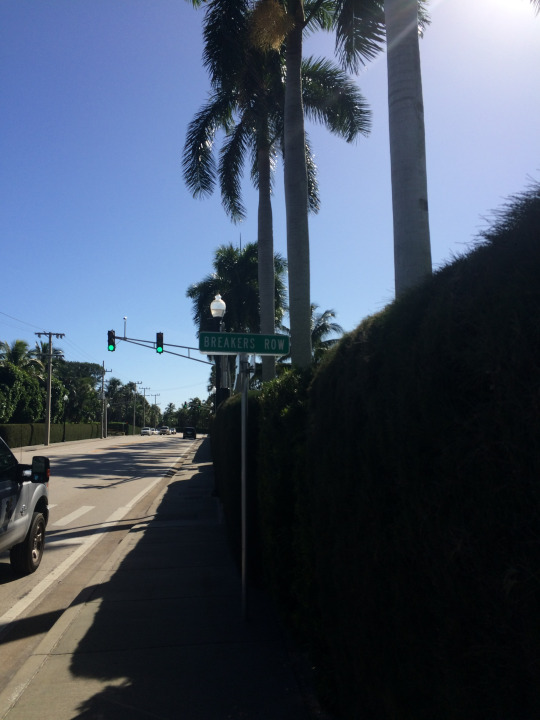
Whether you're visiting Key West for the first time or a seasoned visitor who hasn't been since you were a child, you'll find enough to see and do. Here are some top sites to visit in Florida's oldest city, from the iconic Southernmost Point to the Butterfly and Nature Conservatory.
The Florida Keys Eco-Discovery Center, located on the historic Truman Waterfront in Key West, provides a variety of educational displays. The center focuses on the Florida Keys's marine environment and educates youngsters about conservation, biodiversity, and the advantages of reefs. The center has a 2,500-gallon coral reef tank and instructional materials about reefs, mangroves, and ocean life.
The Florida Keys have a diverse ecology with several fauna and bird species. In addition to aquatic life, the islands provide a winter haven for snowbirds. The Eastern National Wildlife Refuge is also located in the Florida Keys.
Several endangered animals call the Florida Keys home. The Key Deer is one of the most endangered species. It is North America's smallest deer and is classified as a subspecies of white-tailed deer.
The Key West Butterfly and Nature Conservatory, located on Duval Street, is a peaceful haven. Hundreds of butterflies may be seen in their natural environment here. This lovely hideaway was named one of the top four things to do in Key West.
You may get a close look at exotic tropical butterflies at the Conservatory. These lovely species are brought in from Africa, Asia, and Australia. They have relatively brief lifespans, with many dying within two weeks.
The Eco-Discovery Center has an interactive exhibit on the Florida Keys National Marine Sanctuary. The interactive displays at the center illustrate how the Sanctuary strives to safeguard the Florida Keys' natural resources. It is entirely free to visit. The center is open daily from 9 a.m. to 4 p.m.
The Conservatory is also home to a variety of birds and fauna. This makes it an ideal location for a picture stop. The Conservatory is situated on Duval Street's southern terminus. From 9 a.m. until 5 p.m., the Conservatory is open. It is handicapped-accessible.
The Conservatory is worth a visit, particularly for children. The butterflies and birds will captivate them. They will also value the learning center. The center features displays and a movie about the life cycle of butterflies.
The Oldest House in South Florida, located at 322 Duval Street in Old Key West, is the state's oldest surviving residence. This mansion, erected in 1829, has weathered storms, fires, and other natural calamities. Richard Cussans, a ship's carpenter, constructed the home.
The home was built in the Classic Revival style at the time. It draws inspiration from colonial architecture. A spacious garden with lush tropical flora and a gazebo surrounds the home. It also has several endemic florae.
The residence is free and accessible to the public. Relics and papers on exhibit give a historical peek into the island's history. Visitors may also tour the home. A member of staff is available to answer queries.
Captain Francis Watlington and his wife, Emeline, lived at this residence. They had seven kids. The family occupied the place until 1972. The deed to the house was handed to the Historic Florida Keys Foundation when they sold it. The Old Island Restoration Foundation was appointed by the foundation to undertake the restoration project in 1975.
Whether you're visiting Key West, Florida, or simply passing through, the Southernmost Point monument is a must-see. It's a fantastic picture opportunity and a historical monument for the city. There are also several restaurants and stores with the word "southernmost" in their name. Snorkeling and diving are also available at Fort Zachary Taylor State Park.
It's a popular tourist destination for both residents and tourists. The concrete buoy may be seen near Whitehead and South streets. It is about 12 feet tall and seven feet broad. It is colored red, black, and yellow. It also has a plaque adjacent to it that explains the history of the island's black people.
The buoy is open to the public at all times. People from all over the globe come here to shoot photographs. You may also see it with a webcam. You can observe the traffic in real time this way. There is also a view of the Atlantic Ocean.
5 notes
·
View notes
Photo
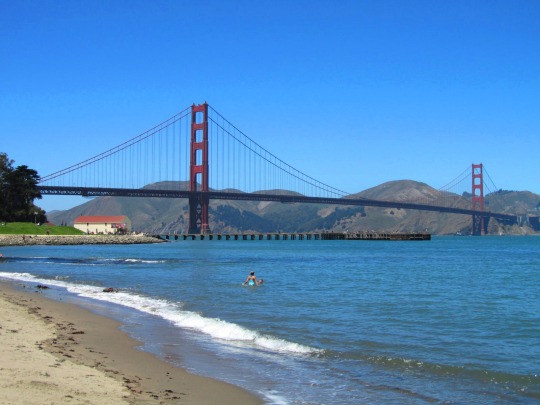



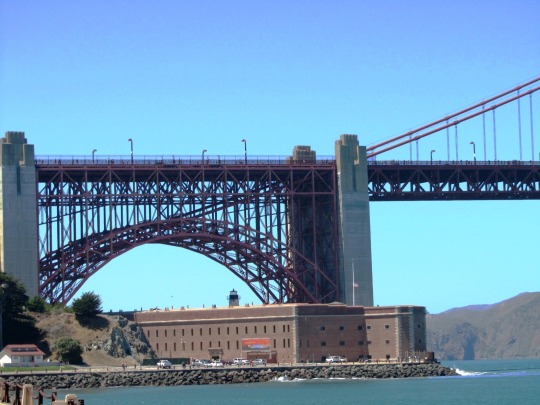

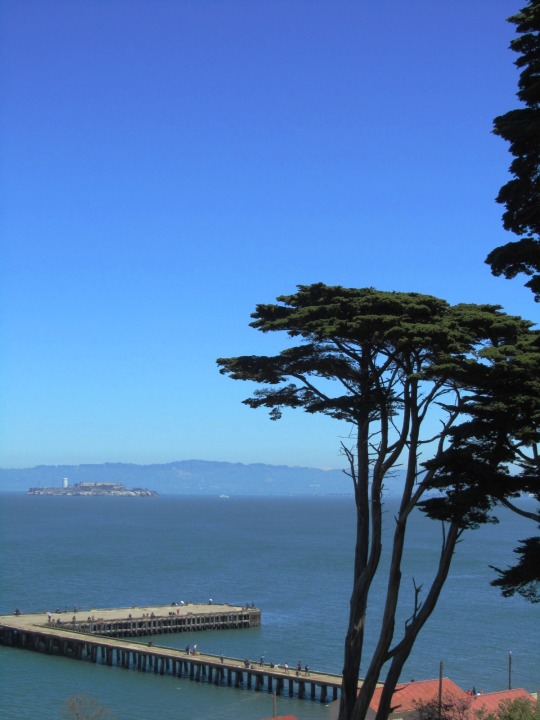



On 5 August 1775 Juan de Ayala and the crew of his ship San Carlos became the first Europeans known to have passed through the Golden Gate strait, anchoring in a cove behind Angel Island, the cove now named in Ayala’s honor.
#5 August 1775#Juan de Ayala#San Carlos#first European#Golden Gate strait#white colonialism#San Francisco Bay#Golden Gate Bridge#San Francisco#Pacific Ocean#Fort Point National Historic Site#California#summer 2012#original photography#Joseph Strauss#Leon Solomon Moisseiff#Art Deco#cityscape#tourist attraction#landmark#Crissy Field#USA#Golden Gate National Recreation Area#Charles Ellis#Irving Morrow
2 notes
·
View notes
Text
Unveiling Kerala: A Paradise Found with Kerala Holiday Packages
Kerala, a land blessed by nature's bounty, beckons travelers with its tranquil backwaters, verdant hill stations, pristine beaches, and vibrant culture. Nicknamed "God's Own Country," Kerala offers an unforgettable experience, and Kerala holiday packages provide the perfect way to explore its magic.
Tailor-Made Experiences with Kerala Holiday Packages

The beauty of Kerala holiday packages lies in their diversity. There is a package created to fulfill your desires, whether you want an Ayurvedic retreat, a wildlife adventure, a cultural immersion, or a beach vacation with your family.
For the Nature Lover:
The best packages are those that highlight Kerala's stunning hill stations, like Munnar, Wayanad, and Thekkady. Imagine sprawling tea plantations, cascading waterfalls, and trekking amidst lush greenery. You can spot exotic wildlife in Periyar National Park or unwind beside serene lakes.
For the Laid-Back Traveler:
Alleppey's backwaters are the embodiment of serenity. Glide through tranquil canals on a traditional houseboat, witnessing the captivating beauty of Kerala's rural life. Enjoy delicious seafood while relaxing in the tranquility of the palm-lined waterways.
For the Culture Enthusiast:
Kerala is known for its rich history. Travel packages that include Kochi, the cultural center, will introduce you to its bustling spice markets, stunning architecture, and colonial influences. Explore the ancient art forms of Mohiniyattam and Kathakali, or take in the vibrant Theyyam performances.
For the Beach Bum:
Kovalam, with its pristine beaches and laid-back charm, beckons sun worshippers. Enjoy water sports, unwind on the golden dunes, and indulge in mouthwatering fresh seafood delicacies. Explore nearby beaches like Mararikulam or Varkala for a more secluded experience.
Unveiling the Gems of Kerala
Kerala holiday packages can be customized to include specific destinations that pique your interest. Here are some of the must-visit places:
Munnar:

Munnar is a hill station located in the Western Ghats and is well-known for its vast tea plantations, foggy hillsides, and scenic lakes. Visit Echo Point, see the stunning sunrise above South India's highest peak, Anamudi Peak, or take a refreshing dip in natural waterfalls.
Alleppey:
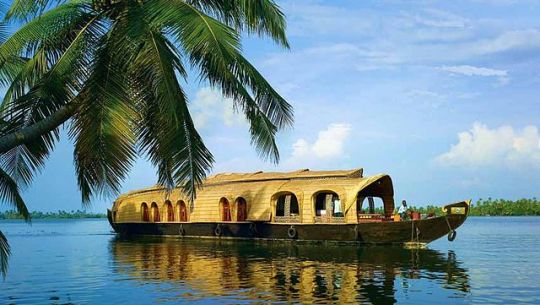
Alleppey's backwaters, known as the "Venice of the East," are a maze of canals, lagoons, and palm-lined waterways. Cruise on a houseboat, a traditional Kerala vessel, and experience the serenity of rural life. Spot colorful birds, witness local fishermen casting their nets, and relish the tranquility of the floating paradise.
Kochi:

Kochi, Kerala's cultural capital, is a melting pot of influences. Explore Fort Kochi, a remnant of Dutch and Portuguese dominance, with its bustling spice markets, historical sites, and charming streets. Kerala's rich history can be glimpsed at the Jewish Synagogue and Mattancherry Palace.
Kovalam:
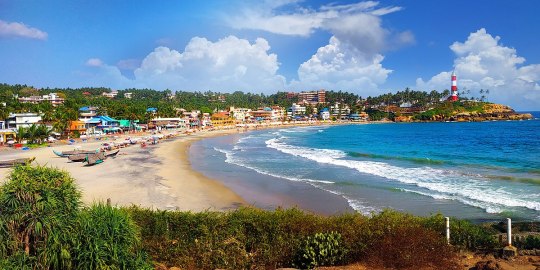
Kovalam's pristine beaches with golden sands and swaying palm trees are a haven for beach lovers. Enjoy a rejuvenating Ayurvedic spa treatment, go kayaking or surfing, or just relax under the sun. Explore Lighthouse Beach, which is well-known for its recognizable lighthouse, or visit the bustling shops and cafes.
Beyond the Tourist Trail
For a truly immersive experience, consider incorporating unique aspects into your Kerala holiday packages:
Ayurvedic Rejuvenation: Kerala is renowned for Ayurveda, an ancient Indian system of holistic healing. Packages incorporating Ayurvedic treatments and wellness practices will leave you feeling rejuvenated and relaxed.
Homestay Experience: Opt for a homestay in a traditional Kerala village and experience authentic local life. Interact with families, learn about their culture, and savor delicious home-cooked meals.
Festivals and Celebrations: Time your trip to coincide with one of Kerala's vibrant festivals like Onam, a harvest festival celebrated with much pomp and fervor, or Thrissur Pooram, a spectacular temple festival renowned for its energetic elephant processions.
Planning Your Kerala Holiday
The ideal time to visit Kerala depends on your preferences. While the monsoon season (June to September) reveals the state's lush greenery, the winter months (November to February) offer pleasant weather.
When choosing Kerala holiday packages, consider factors like the duration of your trip, your budget, and the type of experiences you seek. A wide range of packages are offered by numerous travel agents; do research and compare them to discover the best deal.
Kerala Awaits: Unforgettable Experiences Beckon
Kerala attracts with its stunning scenery, vibrant culture, and warm hospitality. Kerala holiday packages provide a hassle-free and all-inclusive way to see this fascinating place. So, pack your bags, embrace the magic of Kerala, and embark on an unforgettable journey.
#india tourism#holiday package#india trip#tour and travel#tourism#kerala tour package#kerala holiday packages
0 notes
Text
Uttarakhand: A Tapestry Woven with Nature, Adventure, and Spirituality

Cradled in the majestic embrace of the Himalayas, on the northwest boundary of uttarakhand tour packages from ahmedabad, one realizes that the heart here swells in resonance with the landscapes of yore. Pristine valleys engulfing life-giving rivers flowing from glistening peaks, their snow-capped pyramids piercing the bright azure sky, and history speaks louder from ancient temples—this is Uttarakhand, land of memories. This is the essence that this state promises an unforgettable experience for every kind of traveler.
A Nature Lover's Paradise:
Nature lovers' paradise, Uttarakhand is. Trek through forests alive with diverse wildlife, from majestic Himalayan tahr to elusive snow leopards. Stroll along meadows blooming with wildflowers, like the vibrant rhododendrons in the Valley of Flowers National Park, a UNESCO World Heritage Site.
Adventure Awaits:
Adrenaline junkies have their dreamland at Uttarakhand, which offers a playground to them. Take a ride on the Ganges River and descend a wave of its rapids, where your heart will get jolted. For those in winter mode, go towards Auli, a pleasantly picturesque ski resort that wraps the valley in the snow-smothered highlands. You have to test your skills on challenging slopes or simply revel in the breathtaking panorama.
A Spiritual Sanctuary:
Uttarakhand is steeped in spirituality. Pay homage at revered Hindu pilgrimage sites like Haridwar and Rishikesh, where the sacred Ganges river flows. Witness the aarti, a mesmerizing evening ritual of lamps offered to the river—a spectacle that will leave you spellbound. Find serenity at serene ashrams dedicated to yoga and meditation, finding inner peace amidst the tranquility of the Himalayas.
Unveiling the Gems of Uttarakhand:
1. The Enchanting Hill Stations:
Uttarakhand boasts charming hill stations, each with its unique character. Mussoorie, the "Queen of Hills," has breathtaking views and colonial-era architecture. For leisure, navigate along the shimmering lake town of Nainital, located on a scenery-lined promenade, or simply sail through a leisurely boat ride. If you're in for a more relaxed getaway, journey to Munnar, a hill station endowed with rolling tea plantations and some truly unforgettable sunsets.
3. A Glimpse into Local Culture:
Attune to the rhythm and charm of the Uttarakhand culture. Discover the art of folk dances, which is different from the style of Delhi and Mumbai: for instance, you can witness the Garhwali and Kumaoni styles. Taste Uttarakhand cuisine that is rich, rustic, and incredibly popular with the locals. Sample dishes like Kumaoni Bhatt ki churma (pounded millet) and Garhwali Aloo Gutke (potato curry) as you savor this country's local flavors.
Beyond the Tourist Trail:
Uttarakhand has secret treasures to be explored. Try out Binsar Wildlife Sanctuary, which provides a home to various sorts of birds and dangling species. Explore the ancient ruins of Kangra Fort, one of the most popular historical treasures. For a completely offbeat experience, visit the peaceful villages of Chakrata or Chopta, which present awe-inspiring natural beauty and peaceful surroundings.
Planning Your Uttarakhand Adventure:
Uttarakhand's charm unfolds throughout the year, but the ideal visit hinges on what you seek in your adventure.
Summers (March-June) are quite comfortable and are the best for sightseeing and adventure. Monsoons (July-September) are painting the land green and create a wonderful view but can create landslides. Winters (December-February) bring the state to a winter wonderland to enjoy snow activities, but some high-altitude areas become inaccessible.
Getting to Uttarakhand is easy. Some of the major airports that connect the state with other parts of India are major points for travel. You can also take a train or bus for a more scenic journey.
Accommodation options abound Offering everything from upscale resorts to affordable guesthouses, it's able to suit all budgets.
Crafting Your Dream Uttarakhand Experience:
Yashvi tours And Travels specializes in creating custom tour package gandhinagar. Whether you're a nature enthusiast seeking adventure, a spiritual seeker yearning for peace, a family looking for a memorable vacation, best travel agency in gandhinagar can design the perfect itinerary for you.
Contact us today for international package booking in gandhinagar and domestic package booking in gandhinagar we also provide services of flights booking in gandhinagar let us help you weave your own unforgettable tapestry of experiences in the enchanting land of Uttarakhand!
#uttarakhand#uttarakhandtraveller#uttarakhandheaven#uttarakhandtourism#uttarakhanddiaries#uttarakhand_beauty#uttarakhandvibes#mussoorie#mussooriediaries#mussoorie_queenofhills#nainital#nainitaldiaries#munnar#munnarhills#chakrata#chopta#CustomizedTours#YashviToursAndTravels#travelagent#travelagency#travelagencygandhinagar#iatacertified
1 note
·
View note
Text
Cab Services in Jaipur: Your Access to the Pink City
Best wishes from Jaipur, the jewel in Rajasthan's crown and a city that exudes the spirit of India's vast and diverse past. Jaipur definitely needs to be on your agenda whether you're taking the well-known Golden Triangle tour or traveling via South India. Every visitor is left with an enduring memory of Jaipur due to its beautiful forts, lively markets, and extensive heritage.

South India Tour Packages: Connecting Cultures
The travelers visiting South India should make a stopover or start their journey from Jaipur. Due to its easy access by road, train, and air, the city serves as a perfect starting point for discovering the varied scenery and cultures found in the southern region of the nation. Numerous tour companies provide exhaustive South India tour packages that skillfully combine the grandiose Jaipur with the tranquil recesses of Kerala, the historic Tamil Nadu temples, or the greenest Karnataka coffee fields.
India Golden Triangle Tour: An Historical Tale
The Pink City has a unique appeal for travelers starting the well-known India Golden Triangle tour, involving stops in Delhi, Agra, and Jaipur. Jaipur is covered in this journey to explore a wealth of the ages, construction, and culture, not only to complete the triangle. Jaipur's attractions offer an engrossing story of India's past, from the grand Amber Fort to the intricate City Palace and the heavenly wonder of Jantar Mantar.
Jaipur Navigation: Taxi Service for Facilitate
The adoption of taxi services is a best idea for those who want to explore Jaipur in a necessary manner. A cab service in Jaipur guarantees hassle-free travel and lets you make the most of your time exploring the city's numerous sites whether you're traveling alone, with family, or in a group. With their extensive knowledge of Jaipur's history, culture, and secret attractions, most cab services provide their qualified drivers as expert guides, contributing to your journey experience.
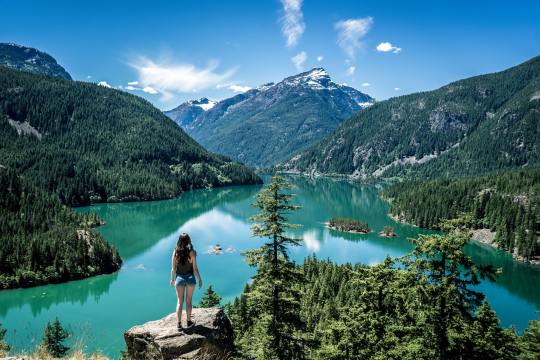
The acceptance of the Intercultural Jaipur
The immersion process in the lively culture of Jaipur is one of the attractions of the tour. The lively bazaars of the city, such Johari Bazaar and Bapu Bazaar, attract visitors with their multitude of hues and provide a wide range of goods, including jewelry and classic Rajasthani clothing, handmade crafts, and antiques. Enjoy the chance to sample real Rajasthani food at local eateries or historic hotels, where each dish offers a tale of culinary history that has been passed down through the ages.
The dissection best physical mysteries of Jaipur
The magnificent architecture of Jaipur attests to the luxury of its former kings and their tastes for fusing elegance with utility. The Hawa Mahal, also known as the Palace of Winds, is a prime example of creative architecture because of its elaborate structure work, which protects royal ladies from public view while they watch street celebrations. With a combination of Mughal, Rajput, and European architecture, the Jaipur City Palace is a visual feast that takes you back to more opulent and graceful times.
Where Every Stone Tells a Story: Jaipur
Jaipur is an experience that symbolizes India; it's more than just a place to visit. Jaipur offers a tapestry of memories that leave a lasting mark on every traveler, whether you're on a South India tour, exploring the Golden Triangle, or just want to immerse yourself in history and culture. Jaipur offers an experience of exploration and amazement unrivaled by any other, featuring easy access to taxi services, a multitude of incredible architecture, and a rich cultural past.
0 notes
Text
Module 4: Public Art
As your are commuting through the Midpoint Memorial bridge in the South West Florida that connects Cape Coral and Fort Myers you are you may see a nearly 20-foot commemoration of five marines and a navy hospital corpsman raising the American flag on Mount Suribachi at the highest point which stands at 560 feet on the small island of Iwo Jima. This statue is one of three original sculptures created by the sculptor named Felix de Weldon. One of the sculptures stands near the Arlington National Cemetery in Virginia while the other one is located at the Iwo Jima Monument and Memorial Museum State Historic Site in Harlingen, Texas. These monuments were made in honor of all Marinies who have given there life in defense of the United States since 1775. These war memorials were inspired by a 1945 photograph taken by Associated Press combat photographer Joe Rosenthal. After seeing that image. Felix de Weldon proposed a sculpture based of the photography to congress, but funding was no possible due to complications in the war. However, a federal foundation in 1947 was establish to raise funds for the main memorical located in Arlington. The Memorial was approved by Congress in 1951 and was accepted by the Marine Corps League, who also selected him to be the sculpture of this said memorial. In total, this sculpture took three years to create a full-sized plaster, having the figures be 32 feet tall. The bottom base is made of black diabase granite from a quarry in Lönsboda, a small town in the southernmost province of Sweden. The overall sculpture features numerous inscriptions commorrating those in the original photograph, each being recoginzed for their overall roll in the Battle of Iwo Jima. Smaller replicas of this sculpure are the ones found in Florida and Texas.
0 notes
Text
What Are the Best Places to Travel in the US in May?
May bursts onto the scene as a vibrant month for travel in the US. Spring fever is in full swing, shaking off the winter chills and ushering in comfortable temperatures, blooming landscapes, and a calendar packed with exciting festivals and events. Whether you crave outdoor adventures, cultural immersion, or cityscapes teeming with life, the US has a perfect May getaway waiting for you.

To help you plan your dream trip, we've compiled a diverse list of the best places to travel in us in may, catering to a range of interests and travel styles:
Nature Lovers:
Zion National Park, Utah: Carved by the Virgin River, Zion National Park boasts towering red cliffs, emerald canyons, and cascading waterfalls. Hike the scenic Canyon Overlook Trail, navigate the thrilling Narrows slot canyon, or embark on a whitewater rafting adventure. May offers pleasant weather for exploration before the summer heat arrives.
Great Smoky Mountains National Park, North Carolina & Tennessee: Spanning two states, the Great Smoky Mountains National Park is a hiker's paradise. Lush forests ablaze with wildflowers provide a breathtaking backdrop for exploration. Take in panoramic views from Clingmans Dome, the highest point in Tennessee, or visit the charming mountain town of Gatlinburg.
Kauai, Hawaii: Nicknamed the "Garden Isle," Kauai offers a tropical escape unlike any other. Kayak along the dramatic Na Pali Coast, hike through the lush Fern Grotto, or witness the cascading power of Wailua Falls. May offers a shoulder season advantage, with fewer crowds and pleasant weather.
Carlsbad Caverns National Park, New Mexico: Descend into a wonderland of otherworldly beauty at Carlsbad Caverns National Park. Explore vast cave chambers adorned with glittering speleothems, witness the nightly emergence of thousands of bats, or take a guided tour to learn about the park's fascinating geology.
Kenai Fjords National Park, Alaska: Immerse yourself in Alaska's breathtaking wilderness at Kenai Fjords National Park. Kayak amidst glaciers, spot wildlife like bears and whales, or cruise through the dramatic fjords for an unforgettable Alaskan experience. May offers a glimpse of spring arriving in this dramatic landscape.
City Slickers:
New Orleans, Louisiana: The Big Easy comes alive in May with a vibrant energy. Immerse yourself in the city's rich culture with a stroll through the French Quarter, indulge in decadent Creole cuisine, or experience the musical magic of Bourbon Street. Don't miss the iconic Kentucky Derby held the first Saturday of May (occasionally bleeds into early June).
San Francisco, California: San Francisco's iconic landmarks and cable cars provide a charming backdrop for your May adventures. Explore the winding streets of Lombard Street, visit the bustling Fisherman's Wharf, or bike across the Golden Gate Bridge for breathtaking views. May offers pleasant temperatures before the summer fog rolls in.
Charleston, South Carolina: Steeped in history and Southern charm, Charleston is a delightful destination in May. Explore historic sites like Fort Sumter and the Battery, wander through the picturesque streets lined with antebellum architecture, or take a carriage ride for a quintessential Southern experience. Enjoy pleasant spring weather and vibrant blooms.
Chicago, Illinois: The Windy City offers a dynamic mix of architecture, art, and culture. Marvel at the architectural wonders along the Chicago Riverwalk, explore world-class museums like the Art Institute, or cheer on a Cubs game at Wrigley Field. May offers comfortable temperatures for exploring the city on foot.
Portland, Oregon: Portland's quirky charm and dedication to sustainability make it a unique urban escape. Explore independent shops on Alberta Street, sip craft beer at a local brewery, or stroll through the Portland Saturday Market, a haven for local artisans. May offers pleasant weather and a vibrant atmosphere.
Festival Fanatics:
Holland, Michigan: Celebrate Dutch heritage and springtime beauty at the Tulip Time Festival in Holland, Michigan. Witness fields bursting with colorful blooms, participate in traditional Dutch dance performances, and indulge in delicious Dutch treats. Held in early May.
New Orleans, Louisiana: Immerse yourself in the revelry of the French Quarter Festival, a vibrant celebration of New Orleans' music, food, and culture. Enjoy live music on multiple stages, sample delectable cuisine from local vendors, and experience the contagious energy of the city. Held mid-May.
Sacramento, California: The California State Fair, held in Sacramento in mid-May, offers a quintessential summertime experience. Enjoy carnival rides, explore agricultural exhibits, indulge in fair food favorites, and witness livestock competitions.
Louisville, Kentucky: The Kentucky Derby, held the first Saturday of May (occasionally bleeds into early June) in Louisville, is a bucket-list experience for horse racing enthusiasts. Witness
#best places to visit in the united states in may#best place to travel in may in usa#best places to visit in usa in may#best places to travel in us in may
0 notes